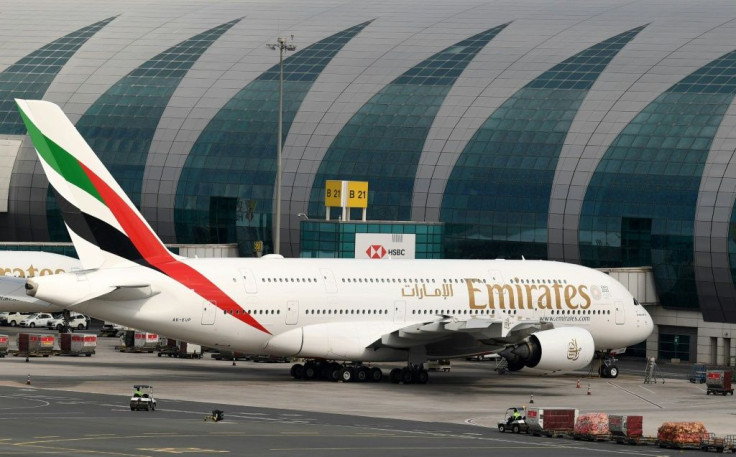Emirates Airlines May Slash 30,000 Jobs, Speed Up Retirement Of Superjumbo A380s

KEY POINTS
- The proposed job ctsl represents about 30% of Emirates' workforce
- Emirates may lay off the majority of its A380 pilots
- Emirates plans to restart limited operations on May 21
Emirates Group, the parent of Dubai-based Emirates Airlines, is reportedly planning to cut 30,000 jobs as the coronavirus pandemic has virtually halted the carrier’s operation.
Bloomberg reported that the proposed job cull represents about 30% of the company’s workforce and would amount to the largest layoff among major global airlines since the pandemic erupted.
"No announcement has been made regarding mass redundancies at the airline. Any such decision will be communicated in an appropriate fashion. Like any responsible business would do, our executive team has directed all departments to conduct a thorough review of costs and resourcing against business projections, even as we prepare for gradual service resumption,” Emirates said in a statement. "As our Chairman [Sheikh Ahmed bin Saeed Al Maktoum] has said, conserving cash, safeguarding our business, and preserving as much of as our skilled workforce as possible, remain our top priorities through this period.”
Emirates is also seeking to accelerate the retirement of its fleet of Airbus A380 aircraft -- the massive double-decker jets that can hold more than 500 passengers. Emirates has been the world’s largest operator of A380s.
Arabian Business reported the airline may lay off the majority of its A380 pilots.
Emirates now plans to mostly use its smaller 777 Boeing wide-body jets for long haul flights. The airline has 155 of these smaller Boeing planes in its fleet, and 115 of the A380s.
“We know the A380 is over, the 747 is over,” Emirates chief executive Tim Clark said in early May.
Airbus itself has said it will cease production of the superjumbo A380 in 2021.
Will Horton wrote in Forbes that Emirates was planning to retire some of its aging A380s even before the arrival of the pandemic, citing that the carrier prefers to maintain “a young fleet age.”
“It was already planning to retire approximately 30 A380s around the middle of the decade, with more exits afterwards,” he wrote. “A post-COVID recovery is not expected until 2023, so it may become necessary to accelerate the fleet plan and retire 46 A380s, which Emirates may have done by 2027/2028. [Those] 46 A380s represent 40% of Emirates’ superjumbo fleet.”
Horton added that there are “wide considerations” over how many A380s can be retired early.
“Aircraft due for airframe or engine overhauls are less desirable, as are those with older generations of cabin products,” he noted.
Emirates suspended regular passenger flights in late March. The airline raised $1.2 billion in new financing in the first quarter and is also seeking aid from the Dubai government.
Emirates plans to restart limited operations on May 21 as some countries begin to reopen their airports to incoming flights.
As with many other global airlines, Emirates is anticipating a streamlined business model after the pandemic passes.
"You also have to consider long-term sectoral shifts. For airlines, people will come back, but maybe not on the [same] scale [as] before,” said Roel Beetsma, professor of pension economics at University of Amsterdam.
Emirates chief Clark has described the pandemic a “black swan event” for the aviation industry -- meaning a rare occurrence with dramatic impact.
"If you go back to any of the major interventions, disruptions that the world has faced since the Second World War; if you took the aggregate of all of those, they wouldn’t be the equivalent to what has happened here” he said. “It’s hugely serious and it’s devastating for the business. I don’t see any way forward at the moment."
Emirates Group is owned by the government of Dubai's Investment Corporation of Dubai.
Another major Arab airliner, Qatar Airways, plans to cut 9,000 jobs.
“Unfortunately, we will have to lay off about 20% of our workforce, equal to the number of aircraft that will not resume flights,” CEO Akbar al-Baker told the BBC last week. “The decision was very difficult, but we had no alternative.”
The airline has more than 46,000 workers.
© Copyright IBTimes 2025. All rights reserved.





















